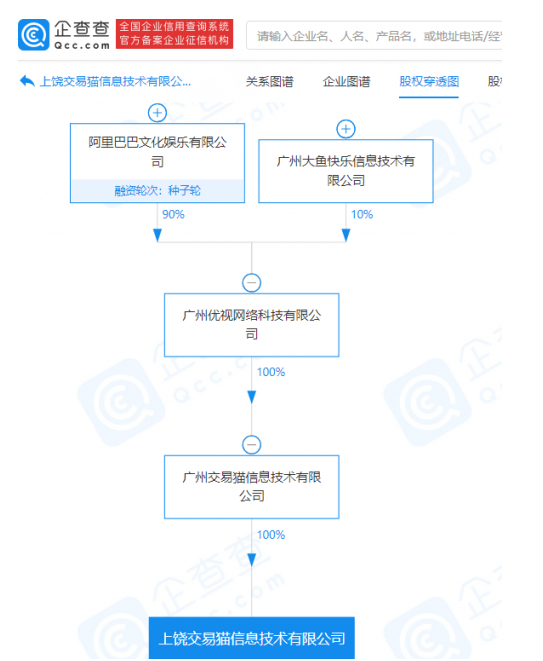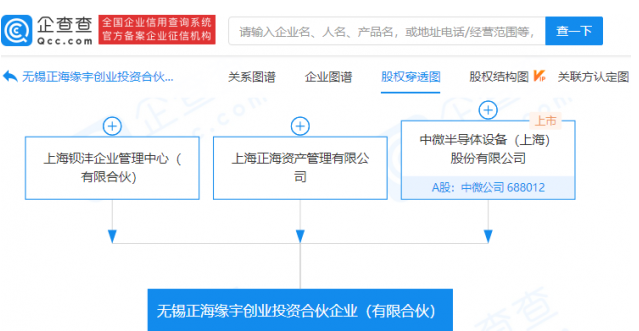人教版高一英語必修三教案
高中阶段学习难度、强度、容量加大,学习负担及压力明显加重,不能再依赖初中时期老师“填鸭式”的授课,“看管式”的自习。下面是小编为你准备的人教版高一英語必修三教案,快来借鉴一下并自己写一篇与我们分享吧!
人教版高一英語必修三教案篇1
一、教學背景分析
 (資料圖片僅供參考)
(資料圖片僅供參考)
1. 单元背景分析
隨著科學技術的發展,各種各樣新的發明和發現都層出不窮。生活在這樣一個知識爆炸的年代,學生們更應用心去體會並感受科技和發明創造者給生活帶來的變化,進而能聯想到他們平時所學的學科及知識,並用英語爲媒介進行知識的整合與串聯。同時從另一個角度來說,科技進步的同時,我們的社會也産生了各種各樣的矛盾與爭論,因此如何正確的看待或處理這些問題,也成爲廣大學生應該了解並掌握的知識。
2.學生情況分析
本單元的設計與實施是建立在學生經過高一上半學期新教材學習基礎之上。學生已經逐步的適應了在活動與任務中學習英語以及如何處理語言知識與活動開展的關系。並且,他們也已經形成並培養了一定的小組合作學習及自主學習的能力。
二、教學目標分析
語言技能
聽:在聽懂教師向學生講述實驗中注意事項基礎上,繼續學習並強化捕捉特定信息的能力,以及確定全文主要話題的概括能力。
說:應能在了解一定的現代科技發明基礎上,思考並學習如何對一種新的事物進行描述。同時能與他人進行交流,敘述事物的利與弊端。
讀:強化略讀、查讀等閱讀微技能,訓練通過尋找關鍵詞,主題句等方式更快速並准確的確定文章的段落大意,理清文章的總體框架與脈絡。繼續運用已經掌握的基本猜詞技巧猜測部分單詞,並在上下文體驗中感受某些佳句給讀者帶來的深層含義。
寫:學習在對事物進行理性思考的基礎上,運用恰當的句型與詞彙描述對事物正反面的不同觀點,同時更應注重掌握一些必要的過渡詞增加此類寫作的條理性與層次感,並應熟悉議論性作文的基本寫作框架。
情感態度與文化意識
(1)進一步培養小組合作學習的能力,通過調查、采訪、討論等活動完成任務,取長補短,加強團體協作意識。
(2)引導學生用英語進行不同學科特點的思考,體會學科之間的聯系與區別。通過話題啓發學生積極思考,調動學生的學習興趣。
(3)指導學生用批判的思維去接受新的事物,增強他們的辯論意識與能力。
(4)意識到科技工作的艱苦以及所必需的個人品質與素質,鼓勵學生在學習過程中的創新精神與實踐能力。
語言知識
词汇:学习并使用一些与science 和scientists有关的词汇。
語法:進一步了解一詞多義現象與合成詞的構成。
功能:學習如何就某一事物給予別人指導與說明。
話題:掌握有關實驗說明的話題表達以及如何從正反兩方面對某一話題進行分析討論。
學習策略
指導學生運用已學會的抓重點、做記號、摘筆記等方式對所學內容進行整理與歸納,並鼓勵學生增加與教師和同學交流、合作,繼續培養正確的自我評價與相互評價的習慣,從而總結交流學習所得,進一步形成有效的學習方法。並指導學生把英語學習從課堂延伸到課外,發揮已掌握的使用工具書,查找資料、上網等方式增加用英語思維與表達的能力,了解實驗對于科學研究的重要性,樹立正確的向上的學習態度,形成具有批判性的看問題習慣。
三、教學內容分析
本单元的中心话题是science and scientists。话题依附于听力、对话、阅读与写作等语言载体中。本单元的话题内容与学生的日常学习有着密切的关系,应该说是以英语为媒体让学生表达他们对平时理化生等理科课程,特别是相关实验,所想到及感受到的内容。因此,尽管本单元的话题对学生而言有着一定的难度,但却有体现出了以学生为中心,贴近学生生活而又富有时代气息的特点。
Warming up设计了四幅与学生的理科课程有关的图片,学生通过对日常熟悉的相干实验工具及场地的识别,展开相关学科特点与学习的讨论。同时在此基础上,要求学生们在Listening部分能熟悉某些实验室的规则及注意事项,掌握如何给予别人指导与说明,并能抓住文章的中心话题,捕捉相关细节内容,回答有关的问题。
Speaking则是一个极富时代气息的讨论练习。要求学生们能对现在热门的尖端科技有所了解,(练习中提供了诸如Maglev train, cloning, nuclear energy, computer 与 space flight等内容)然后能就这些新的科学技术与工具进行理性的辨证的思考,既能感受到它们给我们的生活带来的巨大利益,同时也能发现其中所存在的不足与弊端,并能通过讨论、对话等形式发表自己的观点与想法。这一部分也应该是本单元写作内容的一个铺垫。
Reading讲述的是科学家 Franklin的风筝实验,从而证明Lighting and electricity are the same的故事。学生在理解文章的基础上,能充分感受到实验对于科学工作的重要性及科学家是如何获得事业上的成功的。同时能落实材料中所出现的一些单词与短语的使用。
Language Study是在本单元词汇学习的基础上,让学生进一步了解并掌握一定的构词法。主要是兼类词、一词多义现象及合成词的构成。
Integrating skills 通过学生对科学家是否应利用动物进行实验,从而达到发明新产品现象的讨论,理性的从正反两个方面看待这一问题。同时在阅读、思考与讨论的基础上,写下一篇阐明自己观点、立场与看法的短文。
人教版高一英語必修三教案篇2
一、教學設計意圖
在《高中英语新课程标准》中讲到“高中英语课程要有利于学生优化英语学习方式,使他们通过观察、体验、探究等积极主动的学习方法,充分发挥自己的学习潜能,形成有效的學習策略,提高自主学习的能力;要有利于学生学会运用多种媒体和信息源,拓宽学习渠道并形成具有个性的学习方法和风格。”把信息技术作为英语教学的认知工具和知识载体,围绕英语学科知识进行整合实验,不仅可以扩大英语阅读的“面”和“量”,而且也培养了学生诸如“信息的获取、信息的重组和加工以及信息的交流”等多种信息素养。网络学习是一种学习过程交互化的学习模式。学生带着问题借助网络查询信息,进行信息交流,由此“任务驱动、自主探究、协作交流”等學習策略在这里得到了更充分的体现。使教师把信息技术和网络作为自己真正的工具,把信息技术融入学科教学中来。
二、教學目標設計:
知識與技能:①掌握快速閱讀的方法,熟悉“發表看法,提出建議”的口語技能。②充分利用網絡資源,強化學生自主學習的意識,培養學生組織語言、運用語言的能力。
過程與方法:①培養學生篩選局部和整體信息的能力和獨立閱讀能力,通過自主學習和協作學習,獲取信息和處理信息的能力。②培養學生質疑意識,分析問題、解決問題、綜合問題的能力和創造性思維能力。
情感價值觀:通過本節課的學習,培養學生的人文和信息素養。
三、教材內容及重點、難點分析:
教材内容:本课教学内容是新课标《高中英语必修3 Unit 5》,Canada---The True North 与以往接触过的介绍国家的文章相比,本课的内容没有整体介绍加拿大的地理概况和风土人情,而是透过一个旅人的眼睛来看加拿大。相比较而言,这样的课文难度更大。
教學重點:①對課文內容的整體把握。②學生組織語言、運用語言的能力。
【重點突破】任務驅動,層層深入。利用“任務驅動”方法,使學生利用資源自主探究、解決一系列層層深入的問題。在教學中,教師作爲問題的精心設計者和疑難問題的點撥者,培養學生組織語言的能力。
教学难点:①对课文内容中细节的理解。②对网上各种信息源的比较筛选,及学生易受无关因素的干扰而导致的学习效率问题。【难点突破】 设置情境,循序渐进,层层递进。设置富有情趣的情境,激发他们的阅读__,积极主动地进行自主探究。循序渐进的"设计问题 , 激发学生的创造思维,层层深入地引导学生进行自主和协作学习。
四、教學策略及教法設計:
教學策略①本節課的教學以建構主義學習理論爲指導,以學生爲中心,以問題爲出發點,使課堂教學過程成爲學生自主地進行信息加工、知識意義構建、創新能力發展的過程。教師在教學過程中則適時介入,引導、啓發、組織、幫助、促進。②設計創造性思維問題。所謂創造性思維問題即是指有利于學生創造性思維發展的問題。創造性思維問題的設計應遵循這樣幾個原則:題型具有開放性、解題富有挑戰性。
【教法】:①演示法:把制作的課件、動畫等顯示給學生看,便于學生對微觀知識的把握,並從舊知中獲得啓迪,從而解決問題。②評價閱讀法:將學生通過對材料的收集、整理和內化而形成的學習成果,在全班學生中展示,使學生獲得成功的喜悅,從而激發學生的後續學習熱情。③任務驅動教學法:將所要學習的新知識隱含在一個或幾個問題之中,學生通過對所提的任務進行分析、討論,並在老師的指導、幫助下找出解決問題的方法,最後通過任務的完成而實現對所學知識的意義建構。
五、教學過程設計:
第一步:熱身活動:猜單詞。在這個步驟中,我給出兩組前一節課學過的詞,分別讓兩組同學上來猜。所采用的方式類似于《幸運52》:單詞是出現在屏幕上的,其中一個同學背對著屏幕,他是猜者;另一個同學則是解釋者,他要用英語或輔以動作將單詞的意思表現出來。兩組同學之間展開競爭,看誰猜得又快又多。這個活動不僅可以複習上節課的內容,更重要的是活躍了課堂氣氛,令同學們很快融入課堂氛圍。
第二步:读前活动(一):自由展示。在上这一课之前,我给学生布置的预习任务是介绍你最想去的地方。Which country or place would you like to visit most? Why?学生们自由组成小组,上网查找相关资料,然后对所搜集的信息进行整理,最后形成自己的powerpoint展示文件。在课堂上,由本小组的发言代表上来进行展示和介绍。这一环节是这节课的重头戏。
第三步:读前活动(二):自由交谈。给学生提出这样一个问题:如果你有机会去加拿大,你最想看什么?If you have a chance to visit Canada, what would you expect to see there? 先要求他们在小组内讨论,然后再在全班同学面前发言。
第四步:读前活动(三):小组讨论。经过了前面的大量的有关加拿大的信息的冲击,你愿意用哪三个词语来描述加拿大?What three words would you use to describe Canada? Why? 请小组代表发言。
第五步:加拿大概况综述。这一步骤是对上几个步骤的总结,同时也是教师整合并优化了有关加拿大的各种信息所进行的展示。目的是进一步加深同学们对加拿大的了解,对他们所获取的知识进行 梳理,也为下一个步骤展开铺垫。
第六步:略读课文。(first reading)在这个步骤中,我给出了8个问题,让同学们带着这8个问题来阅读课文。读完后回答问题。
1.Why are the cousins not flying direct to the Atlantic coast?
2.What is the continent they are crossing?
3.What is “The True North”?
4.Why do many people want to live in Vancouver?
5.What happens at the Calgary Stampede?
6.Where does wheat grow in Canada?
7.Why would ship be able to reach the centre of Canada?
8.Name two natural resources that Canada has.
第七步:精读课文。(second reading) 在这个步骤中,我给出了5个跟课文内容有关的句子,让同学们判断正误。如果该句是错的,请给出正确答案。
1.The girls went to Canada to see their relatives in Montreal.
2.Danny Lin was going to drive them to Vancouver.
3.You can cross Canada in less than five days by bicycle.
4.The girls looked out the windows and saw Native Indians and cowboys.
5.Thunder Bay is a port city in the south of Canada, near Toronto.
第八步:复述课文(retelling) 给出课文中的关键词汇,让同学们用自己的话来复述课文。
Helpful words and expressions
great scenery
second largest
go eastward
mountains/lakes/forests/rivers
5,500/from west to east
here in Vancouver
surrounded by
ski/sail
第九步:口头作文(oral practice) 设定一个情境,给出一些关键词汇,让同学们模仿课文来编一段对话或一篇短文。
Suppose two of your cyber pals in Canada come to visit Shenzhen and you are meeting them at the airport. While you are driving them home, you are telling them something about China and Shenzhen, just as what Danny Lin said in the text.
Work in groups. You are required to present either a short passage or a short dialogue.
Helpful words and expressions
great scenery
third largest
go northward
mountains/lakes/forests/rivers
from south to north
here in Shenzhen
along the coast
theme parks
第十步:作業布置。要求學生將第九步中的口頭作文寫出來,變成書面作文。
Write down the short passage or the short dialogue that you’ve just worked out.
人教版高一英語必修三教案篇3
教學准備
教學目標
教學目標 (这部分谢3点,按照USE的目标写)
(1)學習建議信的結構、語言。
(2)討論學校建築物設計中行走不便的學生的需求。
(3)給校長寫一封建議信。
(4)繼續培養對殘疾人的尊重和關愛意識。
教學重難點
教學目標 (这部分谢3点,按照USE的目标写)
(1)學習建議信的結構、語言。
(2)討論學校建築物設計中行走不便的學生的需求。
(3)給校長寫一封建議信。
(4)繼續培養對殘疾人的尊重和關愛意識。
教學過程
Step 1Warming-up and lead-in (5 mins)
(1)導入
用本单元的阅读文Marty’s story来导入,引出残疾人的话题。
T: Hello, class. Inthe last lesson, we learnt Marty’s story. What’s the problem with Marty?
(He has a raremuscle disease.)
Yes, he’sdisabled.
But is Martyleading a miserable life due to his disability?
(No.)
He is leading afulfilling life due to his own efforts. The disabled can live as good andcomfortable a life as we do. But it calls for more efforts.
(2)揭題
教师通过展示我们学校的图片以及通过采访班上一位曾经有行走困难的学生,点出学校有些地方可能对行走困难学生带来不便。然后说明教學目標:阅读一封建议信,讨论学校设施中可以改进的地方,以及写一封给校长的建议信。
T: We are lucky tobe able-bodied and study in such a beautiful school.
But every now andthen, I find such students in our school. What are their problems?
(They havedifficulty walking and they have to move around with walking sticks orwheelchairs.)
T: This is SongYaoguang, our classmate. Yaoguang, what happened to you?
Do you find itdifficult to walk around in our school with a walking stick?
Do you think itnecessary to have our school reconstructed for the students with walkingdifficulty?
(Yes.)
T:If you have some suggestions, you can write asuggestion letter to our headmaster. Have you ever written such a letterbefore?
So in today’slesson, we are going to
1. read asuggestion letter
2. discussproblems with the school facilities
3. write a suggestionletter to the headmaster
2 Reading (15 min)
本課是讀寫結合的綜合語言實踐課,遵循USE的模式,即Understanding(理解)→Sharing(分享)→Expressing(表達)的模式。沒有優質的輸入就沒有優質的輸出,因此通過閱讀建議信來理解建議信的結構、目的和寫作手法,是本節課的重要環節,是USE種的第一步U(Understanding)。
(1) 学习建议信结构。
建議信是正式信件,學生以前在課堂上沒有接觸過,因此要點出建議信的結構。
T: This is aletter to an architect. What information can we get in this part?
(receiver’s nameand address.)
What’s this partabout?
(sender’s name /signature)
From these twoparts, we learn that this is a formal letter. So a suggestion letter is aformal letter.
It is the mostimportant part in a suggestion letter, which is called the body.
(2) 通过阅读了解主旨大意。
T:The main body can be divided into three parts. Whatare they?
(1, 2-6, 7)
T: What"s thepurpose of the 1st paragraph?
(To give thearchitect the purpose of writing the letter.)
What"s the purposeof the last paragraph?
(To persuade thearchitect to adopt her suggestions.)
(3) 通过阅读学习写建议信策略
建議信的目的是讓人接受所給的建議,一要讓讀者對你的建議一目了然,二要讓讀者覺得你的建議有道理,樂于接受你給出的建議。因此,通過閱讀學習寫作策略是非常重要的。
a) 数字和斜体的运用
T: Now, let’s cometo the concrete suggestions that Alice has made. How many suggestions doesAlice make?
Why do you thinkthe writer numbered her suggestions and used italics?
(Highlight the key points so as to make iteasier for the readers to remember and understand her suggestions.)
So when you writea suggestion letter, you should number the suggestions and use italics.
b) 具体写建议时要结合问题和解决办法
T: We are going tolearn some more writing strategies of writing suggestions.
How should wewrite suggestions? Let’s take a look at the first suggestion, what are theproblems for those who use wheelchair?
(the lifts are atthe back of the cinema in cold, unattractive places. As disabled people have touse the lifts, this makes them feel they are not as important as othercustomers.)
And what is thesuggested solution?
(It would be handyto have lifts to all parts of the cinema. The buttons in the lifts should beeasy for a person in a wheelchair to reach, and the doors be wide enough toenter. )
From this part, wecan see that a suggestion should consist of two parts, the problem and thesolution.
Let’s see two moreexamples. Find out the problems and suggested solutions in these two parts.
When you writesuggestions yourselves, don’t forget to write both problems and solutions.
c) 运用礼貌用语
T: The thirdwriting strategy is about the the language. Suppose you were the architect,which one of these two statements do you prefer?
(Screen) I hopeyou will not mind me writing to ask if you have thought about the needs ofdisabled customers.
You must thinkabout the needs of disabled customers.
Why? (It soundsmore polite and more acceptable.)
Exactly. When youwrite suggestions, you should use some polite forms to encourage the reader totake the ideas seriously and make your suggestions more acceptable.
Now let’s findsome more examples in the text.
(Screen)
It would be handyto have lifts to all parts of the cinema.
It would help tofit sets of earphones to all seats...
So I’d like tosuggest that the seats at the back be placed higher than those at the front …
For disabledcustomers it would be more convenient to place the toilets near…
And if the doorscould be opened outwards, disabled customers would be very happy.
I hope mysuggestions will meet with your approval.
Step 3Discussion(8 min)
小組討論是USE中的第二部S(Sharing),分享。各學習小組合作學習,討論學校中哪些地方可能對行走困難學生帶來不便,積累寫作素材,爲下一步的寫作做准備。
T: Now let’s comeback to our topic today. Some parts of our school are not suitable for thosewith walking difficulty. Let’s discuss:
1. What parts ofour school may cause problems for those with walking difficulty?
2. What are yoursolutions?
Step 4 Writing(15 min)
寫作是USE中的第三部E(Expressing),表達。經過前面的閱讀輸入,學生們已經基本掌握了建議信的寫作手法;通過分享,學生們積累了寫作素材;因此,寫作部分由學生完成一封給校長的建議信,指出學校設計中的不足。這也是本堂課的最終目標,實現學生從輸入到輸出的轉化。老師在寫作後進行必要的指導,指出學生寫作中的優點和不足。
Now that we havediscussed the problems and solutions with some school facilities, we can writea suggestion letter to our headmaster. Take out your handouts. The first partand last part are already given to you. What you have to do is write 2-3suggestions on the reconstruction of our school. When writing, do remember towrite both problems and solutions, and use polite forms.
Step 4 Emotionalattitude and values(2 min)
通過本單元Reading和UsingLanguage部分的學習,學生們有了理解、尊重、關心、幫助殘疾人的意識,因此在本節課的最後,做一個總結,也是培養學生情感態度價值觀的一個環節。
In this unit, wehave learned the difficulty of the disabled and how they face and conquer thedifficulty. But as able-bodies people, just making some suggestions or donatingmoney is far from enough. What else should we do?
( Care aboutdetails in their life.
Don’t look down upon them or laugh at them. )
Accept them as one of us,and invite them to join us in avariety of activities.)
人教版高一英語必修三教案篇4
教學目標
I. 单词和词组
permission, nation,reduce, fetch, compare, therefore, remain, dislik, share, persuade, hardly, go ahead, burn down, compared to, give up, call for, be used to, get into the habit of
II. 日常交际用语
1.請求
May / Could / Can I do that?
I wonder if I can do that.
Would / Do you mind if I come earlier?
Will you tell me if can go now?
2.允許
Yes, please. / Of course. / Sure. / Certainly.
Go ahead, please.
That’s all right. / OK.
It’s all right to me.
3.拒絕
I’m sorry, but it’s not allowed here.
You’d better not.
I’m afraid not. It’s not right.
III.語法
複習名詞性從句作賓語和表語的用法。
教學建議
教材分析
The main dialogue of this unit is to practise the students how to ask for permission, refuse and give permission ability. Though learning the way of expressing are able to remind the students speaking in daily life. This dialogue is the main idea to learn to use these phrase for permission. Though two men’s talking. Meanwhile this lesson offer some practice to help the students to understand and learn about the content of the dialogue. In order to master these phases, this lesson has short dialogue to give the students to speak each other.
重點詞彙講解
1.catch fire与be on fire
1)catch fire:begin to burn着火;烧着。catch fire有动态含义,揩“开始燃烧”。
例如:
Paper catches fire easily.纸容易着火。
The bed clothes catch fire and the whole house may be burnt down.铺盖着火了,整个房子都可能烧掉。
2)be on fire:be burning着火;失火。 be on fire有静态含义,指“燃烧的状态”。
例如:
The house was on fire.房子着火了。
She woke up at midnight and found the kitchen on fire.她半夜醒来发现厨房失火了。
人教版高一英語必修三教案篇5
一、 教材分析:
学生在度过一个假期后,英语知识较生疏,教师应当复习好以前单词,为学习新知打下基础。Let’s talk A部分很好地体现了这一点。Good morning We have a……复习民第一册中内容。“I’m from America”这一句为B Let’s taik“Where are you from?做了铺垫,教师应充分注意这一点
boy、girl 、teacher student 、meet等单词又是第一次出现,也需要我们特别关注。
二、教學目標:
1、能够得简单地表达自己心情,如:nice to meet you welcome back to school
2、能够听懂并回答 Where are you from?
I’m from
3、認識、會說字母A——E
4、掌握A、B Ler’s talk中单词。
5、理解A、B Ler’s talk中内容。
三、教學重、難點:
能够听懂并回答 Where are you from?
掌握A、B Ler’s talk中单词。
理解A、B Ler’s talk中内容。
四、課時安排
第一课时 A lLet’s talk Let’s learn B Let’s sing
第二课时 A Let’s practise Let’s play Let’s chant
第三课时 B lLet’s talk Let’s learn
第四课时 BLet’ssay Let’spractise
第五课时 B Let’s Let’s
第六课时 C story time
人教版高一英語必修三教案篇6
教學目標
Knowledge and ability: To help the Ss know about the history of the Amber room and develop their reading skills.
Process and method: Ss acquire knowledge and improve ability through discussion and competition.
Emotion, attitude and values: to arouse Ss"s awareness of protecting the cultural relics. Understand cultural relics belong to the whole world and the human beings.
教學重難點
important point: Understand the content of the whole passage and master the different reading skills,such as ,skimming, scanning and so on.
difficult point : how to solve the questions and find the useful information using the reading skills.
教學工具
課件
教學過程
Lead in
1. show some pictures .
2. show the pictures and a short video of amber room.
purpose: motive Ss"s interest.
Hi, everyone. Let’s look at the screen. I’ll present you some pictures. They are all about cultural relics. Some of them are cultural sites. Some of them are natural sites. Only an international professional organization from UN has the right to decide on and name them.
Presentation
Look at the photos here. What do you know about the substance of “amber”? What do know
about the cultural relics “the Amber Room”?
discussion:
Now, boys and girls, I met a “moral dilemma”. That means I must make a choice between the interests of the family and the interests of the society. Things are like this: My old granny happened to find an ancient vase under a tree in the earth of our garden. It’s so beautiful and special. Now, my family fell into a moral dilemma. Can you help us to make a decision?
A: What should we do?
B: Can we keep it for ourselves or report it to the government?
C: Have you come across such a situation — to make a difficult choice?
listen and answer the questions:
Play tape. Ss get the main idea of the passage.
Reading
pre-reading:
1. Have you ever seen a piece of amber?
What do you know about it?
2. look at the title and the picture. predict what it is about. Then skim it quickly and see if you were right.
Reading:
1st time:
read by yourself as quickly as you can.
join the correct parts of the sentences together.
2nd time:choices and T/F
compete between boys and girls.
3rd time:
answer some question. Ask ss to think over and discuss.
purpose: understand the text better and arouse Ss"s awareness of competition. Grasp the main information.
Discussion and report
Think over of what we discuss in the part of warming up: I find myself falling into the dilemma.
you discuss together ,and write down the outline of a report.
work in group
Consolidation
fill in the blanks (summary).
Homework
make a report .
use the useful information in the passage.
人教版高一英語必修三教案篇7
Teaching goals
1 Target language
a. Key words
achieve, achievement, condition, welfare, institute, connection, campaign, organization, specialist, behave, behavior, worthwhile, nest, observe, observation, respect, argue, entertainment, inspire, support, devote …… to
b. Key sentences
Watching a family of chimps wake up is our first activity of the day.
Everybody sits and waits while the animals in the group begin to wake up and move.
But the evening makes it all worthwhile.
…… we see them go to sleep together in their nest for the night.
Only after her mother came to help her for the first few months was she allowed to begin her project.
For forty years Jane Goodall has been helping the rest of the world understand and respect the life of these animals.
2 Ability goals
a. Learn Warming Up, and know how to tell the great women and the famous women.
b. Learn the way to describe a person from what the person did, what she/he looks like
3. Learning ability goals
Teach Ss how to describe a person.
Teaching important points
a. By reading A protector of African wildlife, students can learn from Jane Goodall in at least two aspects: one is what is the humane way to study animals; the other is that it was her great personality - universal love and mercy(博爱与慈悲 )that made her successful. If everyone had such kind of heart, they would give everything benefit for all living things. Then our world will be full of love and peace, without any war and starvation.
b. Ask students to answer these questions:
1) What made her a great success?
2) What should we learn from Jane Goodall?
Teaching difficult points
Let everyone believe that all of us can become Jane Goodall.
Teaching methods
Inspiration, Questioning and Discussion.
人教版高一英語必修三教案相关文章:
★ 高一英语微课教学设计5篇
★ 2022高一英语教师个人教学计划范文
★ 2022高中英语教案表格范文
★ 高中英语讲课教案模板范文集锦
★ 英语高一下册教学设计方案五篇
★ 高中英语公开课教案范文集锦
★ 高中英语教案格式范文集锦
★ 2021高中英语人教版教案例文
★ 高一人教版英语年度教学计划2021
★ 人教版高三英语必修三知识点整理2022

 魅蓝回归后首款新品定名为“魅蓝 Blus” 你怎么看?
魅蓝回归后首款新品定名为“魅蓝 Blus” 你怎么看?  携手金晨、马丽、阿云嘎 抖音上线全新防沉迷提示视
携手金晨、马丽、阿云嘎 抖音上线全新防沉迷提示视  穩居第一陣營!2021年Q2百度成中國第四朵雲
穩居第一陣營!2021年Q2百度成中國第四朵雲  如約兌現!三星已開始向華碩供應OLED屏幕
如約兌現!三星已開始向華碩供應OLED屏幕  阿里巴巴关联公司成立新公司 法人为曹砚
阿里巴巴关联公司成立新公司 法人为曹砚  蔚来打通京津冀都市圈高速换电网络 让出行更方便
蔚来打通京津冀都市圈高速换电网络 让出行更方便  格罗方德今年有望提高汽车芯片产量 还要扩大产能
格罗方德今年有望提高汽车芯片产量 还要扩大产能  中微公司参股成立创业投资公司 经营范围包含创业投
中微公司参股成立创业投资公司 经营范围包含创业投  SK创新股东大会批准剥离电池业务 并上市融资
SK创新股东大会批准剥离电池业务 并上市融资  贾跃亭被强制执行4亿元 涉及金融借款合同纠纷
贾跃亭被强制执行4亿元 涉及金融借款合同纠纷